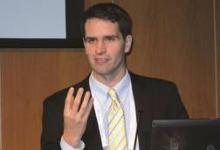AMSTERDAM – The incidence of burning mouth syndrome is considerably lower than previously reported, according to findings from the first population-based study of the disorder.
The age- and gender-adjusted incidence of burning mouth syndrome during 2000-2010 in Olmsted County, Minn., was 11.4 cases per 100,000 person-years, John J. Kohorst reported at the annual congress of the European Academy of Dermatology and Venereology.
Prior epidemiologic studies have reported prevalence rates all over the map, from 1% to 40%, probably in large part because they used a variety of definitions for burning mouth syndrome. The new population-based study focused on disease incidence rather than prevalence utilized a standardized definition for the diagnosis: subjective burning pain of the oral mucosa in the absence of physical findings or an identifiable extraneous cause. All cases had to be diagnosed by a physician participating in the Rochester (Minn.) Epidemiology Project, explained Mr. Kohorst, a medical student at the Mayo Medical School in Rochester.
Because burning mouth syndrome is a diagnosis of exclusion, typically a year or more goes by and three different physicians are consulted before the correct diagnosis is made.
The pathogenesis of burning mouth syndrome remains poorly understood. It is predominantly a disorder affecting postmenopausal women. In the Minnesota study, for example, women accounted for 84% of the 169 individuals diagnosed with new-onset burning mouth syndrome during the study period. The incidence among women was 18.8 cases per 100,000 person-years, compared with 3.7 per 100,000 person-years in men. The incidence climbed sharply after age 50 in both men and women, achieving a peak rate of 70.3 cases per 100,000 person-years among women age 70-79.
Some prior studies have reported a strong association between burning mouth syndrome and smoking that wasn’t evident in the Olmsted County population-based study. Only 11% of the Minnesota patients with new-onset burning mouth syndrome were current smokers and 63% were never-smokers, rates mirroring those of the county’s general population, according to Mr. Kohorst.
Eighty-eight percent of patients reported bilateral as opposed to unilateral mouth pain. The tongue was the sole involved site in 53% of cases. Forty-two percent of patients rated the pain as mild, while 13% characterized it as severe based upon a score of 8 or more on a 10-point scale. Most affected patients described the burning pain as a continuous feature throughout their day.
The next step in this research project will be to investigate the potential role of concurrent disease states and medication use in the incidence and prevalence of burning mouth syndrome in the county’s population, Mr. Kohorst said.
He reported having no financial conflicts regarding this study.


